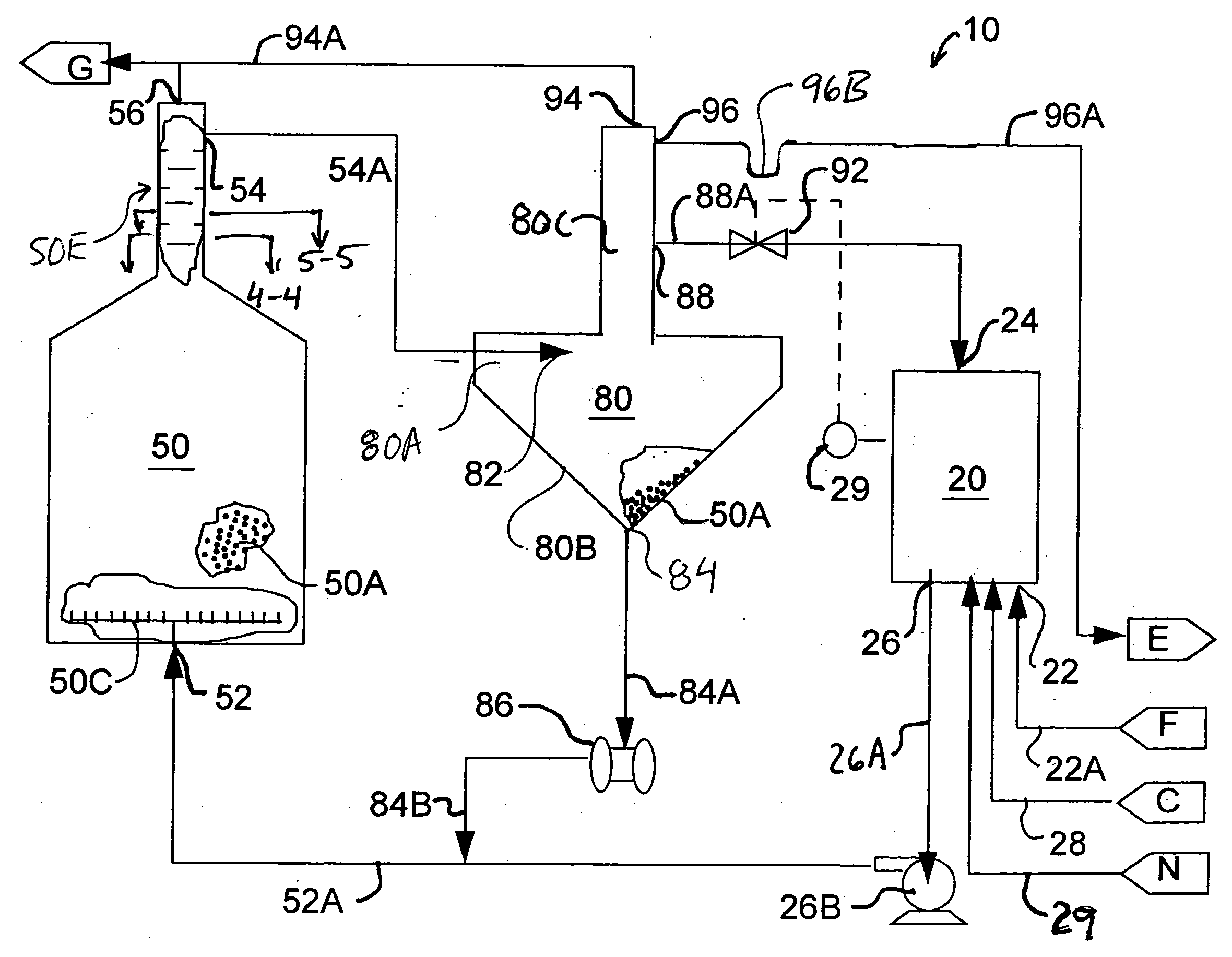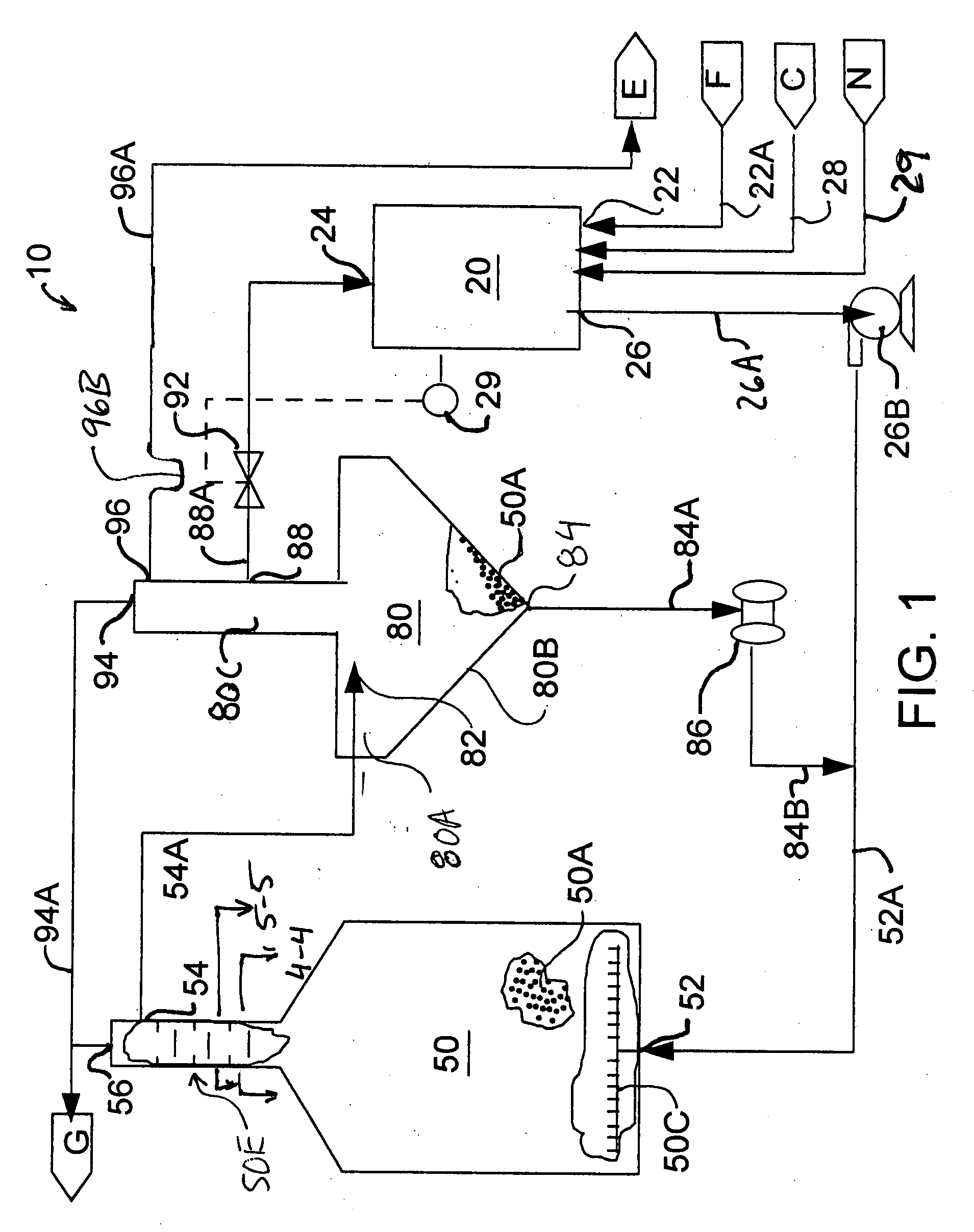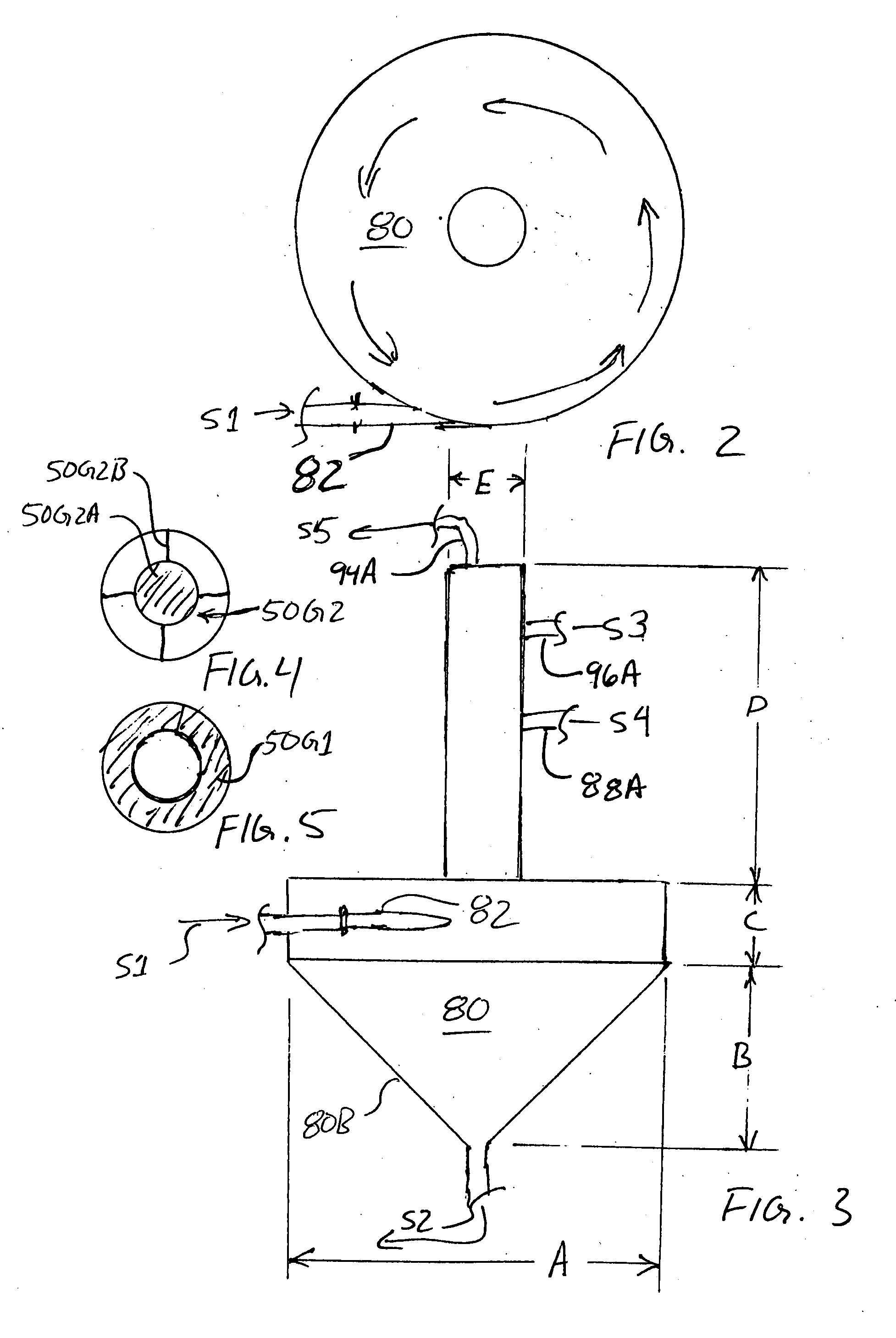Anaerobic wastewater treatment system and method
a wastewater treatment system and anaerobic technology, applied in the direction of liquid degasification, multi-stage water/sewage treatment, separation process, etc., can solve the problems of reducing the capacity of prior art bioreactors below the biological level, impede the migration of buoyant granules to the surface, etc., to achieve high densities
- Summary
- Abstract
- Description
- Claims
- Application Information
AI Technical Summary
Benefits of technology
Problems solved by technology
Method used
Image
Examples
Embodiment Construction
[0014]Referring to FIG. 1, an anaerobic wastewater treatment system 10 generally includes a recycle tank 20, a bioreactor tank 50 and a bioselector 80.
[0015]Recycle tank 20 includes an intake 22 for receiving wastewater from a wastewater feed pipe 22A, a recycle inlet 24 for receiving recycled treated waste water from bioselector 80, a recycle outlet 26 for feeding a recycle mixture to the intake of bioreactor tank 50. Recycle outlet 26 connects via a recycle feed pipe 26A and a recycle feed pump 26B to an intake 52 of bioreactor tank 50. Also, preferably included with recycle tank 20 are a means for adding nutrients 28 and a means for introducing additives for balancing pH 29.
[0016]Bioreactor tank 50 has an intake 52 near its lower end. Intake 52 is connected with the recycle outlet 26 of the recycle tank 20 and receives a recycle mixture from recycle tank 20 via recycle feed pump 26B through pipe 52A. As shown in FIG. 1, pipe 52A also receives a flow from bioselector 80 via biosel...
PUM
| Property | Measurement | Unit |
|---|---|---|
| diameter | aaaaa | aaaaa |
| diameter | aaaaa | aaaaa |
| temperature | aaaaa | aaaaa |
Abstract
Description
Claims
Application Information
 Login to View More
Login to View More - R&D
- Intellectual Property
- Life Sciences
- Materials
- Tech Scout
- Unparalleled Data Quality
- Higher Quality Content
- 60% Fewer Hallucinations
Browse by: Latest US Patents, China's latest patents, Technical Efficacy Thesaurus, Application Domain, Technology Topic, Popular Technical Reports.
© 2025 PatSnap. All rights reserved.Legal|Privacy policy|Modern Slavery Act Transparency Statement|Sitemap|About US| Contact US: help@patsnap.com



